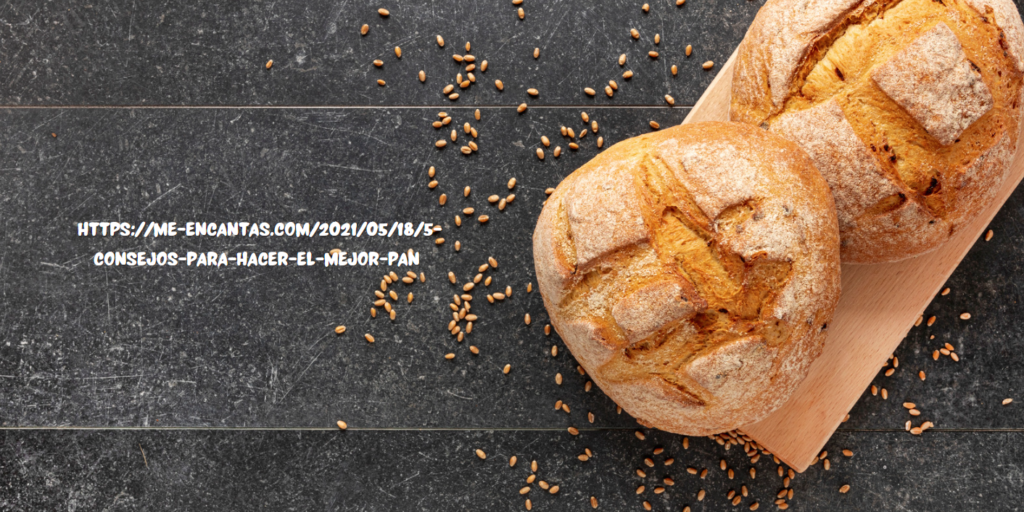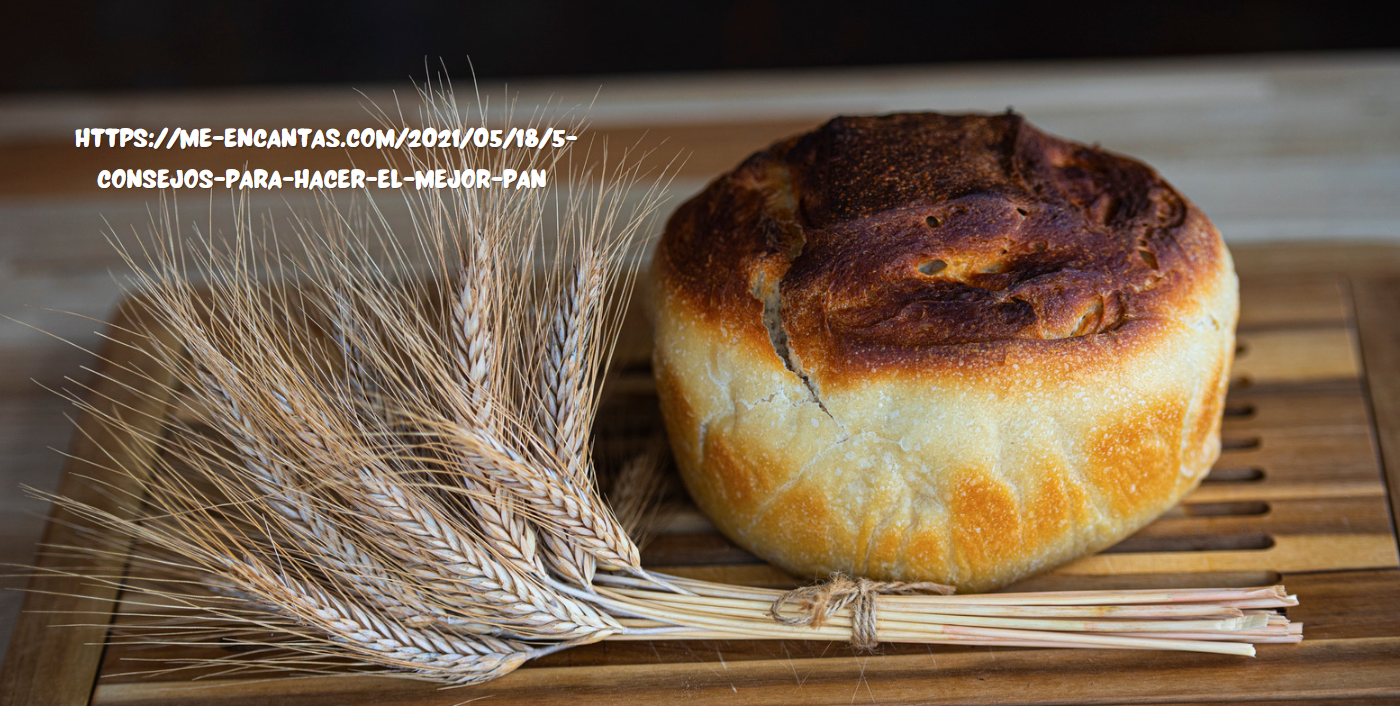The Ultimate Guide to Making the Best Bread at Home: Insights and Tips from https://me-encantas.com/2021/05/18/5-consejos-para-hacer-el-mejor-pan
Bread is often referred to as the “staff of life,” and for good reason. It’s a fundamental part of many cuisines and a source of comfort for countless individuals. Making bread at home can be a rewarding experience, and by following expert advice, you can elevate your baking skills.
Drawing inspiration from the article at https://me-encantas.com/2021/05/18/5-consejos-para-hacer-el-mejor-pan, this comprehensive guide delves deeper into the five essential tips for making the best bread, offering unique insights and expanded techniques.

Also Read: PRNDOT: Understanding Automatic Transmission Gears and Driving Efficiency
Why Bake Bread at Home?
The Joy of Homemade Bread
Baking bread at home is more than just a culinary activity; it’s an experience that engages the senses. The aroma of fresh bread wafting through your kitchen can evoke feelings of nostalgia, warmth, and comfort. Moreover, homemade bread allows you to control the ingredients, ensuring freshness and quality.
Health Benefits of Homemade Bread
When you bake bread at home, you can choose healthier ingredients, such as whole grains and organic flour, and avoid preservatives and additives often found in store-bought options. Additionally, homemade bread can cater to specific dietary needs, such as gluten-free or low-carb diets.
Also Read: PRNDOT: Understanding Automatic Transmission Gears and Driving Efficiency
Essential Tips for Making the Best Bread
1. Choose Quality Ingredients
The foundation of great bread lies in its ingredients. Here’s what to consider:
- Flour: Opt for high-quality flour that suits your recipe. Bread flour, with a higher protein content, is ideal for yeasted breads as it creates more gluten, providing structure and chewiness.
- Yeast: Use fresh yeast for the best results. Whether using active dry yeast or instant yeast, ensure it is within its expiration date. Fresh yeast leads to better rising and flavor development.
- Water: The temperature of the water is crucial. Water that is too hot can kill the yeast, while water that is too cold can slow the rising process. Aim for lukewarm water (about 110°F or 43°C) to create the perfect environment for yeast activation.
- Salt: Don’t skip the salt! It enhances flavor and controls yeast fermentation, contributing to the overall texture and taste of the bread.

2. Master the Kneading Process
Kneading is essential for developing gluten, which provides structure and elasticity to bread. Here’s how to perfect your kneading technique:
- Hand vs. Machine: While a stand mixer can make kneading easier, kneading by hand allows you to feel the dough and understand its texture. Aim for a smooth, elastic dough that springs back when poked.
- Kneading Technique: Use the heel of your hand to push the dough away from you, fold it over, and rotate it. Repeat this process for about 8-10 minutes. If the dough sticks to your hands, lightly flour your work surface.
3. Allow for Proper Fermentation
Fermentation is the process where yeast converts sugars into carbon dioxide and alcohol, causing the dough to rise. Here’s how to achieve optimal fermentation:
- First Rise (Bulk Fermentation): After kneading, let your dough rise in a warm, draft-free area. Cover it with a damp cloth to prevent drying out. Allow the dough to double in size, which usually takes 1-2 hours.
- Shaping and Second Rise: Once the dough has risen, gently deflate it and shape it according to your recipe. Allow it to rise again until it has doubled in size. This second rise enhances the bread’s flavor and texture.
4. Temperature and Baking Time
The right temperature and baking time are crucial for achieving the perfect crust and crumb. Here are some tips:
- Preheating the Oven: Always preheat your oven before baking bread. This ensures that your bread rises properly and develops a golden crust. A typical baking temperature for bread ranges from 375°F to 475°F (190°C to 245°C), depending on the type of bread.
- Steam for a Crusty Exterior: Adding steam to the oven during the first few minutes of baking can help create a crispy crust. You can achieve this by placing a pan of hot water in the oven or misting the oven with water before placing the bread inside.
- Checking for Doneness: To determine if your bread is done, tap the bottom; it should sound hollow. Use a thermometer to check the internal temperature—most breads are done when they reach around 190°F to 210°F (88°C to 99°C).
5. Cool Before Slicing
After baking, it’s essential to let your bread cool before slicing. Cooling allows the steam to escape, which improves the texture and prevents sogginess. Here’s what to do:
- Cooling Rack: Transfer your bread to a wire cooling rack. This allows air to circulate around the loaf, preventing the bottom from becoming wet.
- Waiting Game: While it may be tempting to slice into warm bread, wait at least 30 minutes before cutting. This patience pays off with a better texture and flavor.

Also Read: PRNDOT: Understanding Automatic Transmission Gears and Driving Efficiency
Additional Tips for Bread Enthusiasts
Experimenting with Flavors and Add-Ins
Once you’ve mastered the basics of bread-making, don’t hesitate to experiment! Here are some ideas to enhance your bread:
- Herbs and Spices: Add dried or fresh herbs to your dough for a flavorful twist. Consider rosemary, thyme, or garlic powder.
- Seeds and Nuts: Incorporate seeds (like sunflower or pumpkin) or nuts (such as walnuts or pecans) for added texture and nutrition.
- Cheese: Mixing in cheese, like cheddar or feta, can create a delicious savory bread perfect for sandwiches or as a side.
Understanding Different Bread Types
Bread comes in various forms, each with its unique techniques and flavors. Familiarize yourself with different types:
- Sourdough: A naturally leavened bread that uses wild yeast. It requires a sourdough starter and longer fermentation times.
- Whole Wheat Bread: Made with whole wheat flour, it offers a denser texture and more nutrients compared to white bread.
- Flatbreads: These breads, like naan or pita, are often cooked at high temperatures and do not require yeast.
Troubleshooting Common Bread-Making Issues
Even experienced bakers encounter challenges. Here are solutions to common problems:
- Dough Not Rising: Check the freshness of your yeast and ensure the environment is warm enough for fermentation. If using whole wheat flour, it may take longer to rise.
- Dense Bread: This can result from over-kneading, insufficient rising time, or too much flour. Adjust your kneading and measuring techniques for better results.
- Gummy Interior: Ensure the bread is fully baked by checking the internal temperature. Also, avoid cutting too soon, as the steam needs time to escape.

FAQs: https://me-encantas.com/2021/05/18/5-consejos-para-hacer-el-mejor-pan
1. What is the best type of flour for bread-making?
For bread-making, bread flour is ideal due to its high protein content, which helps develop gluten. All-purpose flour can also be used, but it may result in a less chewy texture.
2. How do I know if my yeast is active?
To check if your yeast is active, dissolve it in warm water with a pinch of sugar. If it bubbles and froths within 5-10 minutes, it is active and ready to use.
3. Can I make bread without kneading?
Yes! No-knead bread recipes have become popular. They rely on longer fermentation times to develop gluten naturally, resulting in a flavorful and chewy bread.
4. How should I store homemade bread?
Store your homemade bread in a paper bag at room temperature for up to three days. For longer storage, freeze it by wrapping it tightly in plastic wrap and placing it in an airtight bag.
5. Can I use gluten-free flour for bread-making?
Yes, but gluten-free flour behaves differently than wheat flour. Look for specific gluten-free bread recipes that often include additional ingredients, such as xanthan gum, to help with structure.
Also Read: PRNDOT: Understanding Automatic Transmission Gears and Driving Efficiency
Conclusion: https://me-encantas.com/2021/05/18/5-consejos-para-hacer-el-mejor-pan
Baking bread at home is an art that combines science, technique, and creativity. By following the essential tips inspired by https://me-encantas.com/2021/05/18/5-consejos-para-hacer-el-mejor-pan, and expanding upon them with personal insights, anyone can create delicious, homemade bread that surpasses store-bought options.
From selecting quality ingredients to mastering the kneading and fermentation processes, each step is crucial in achieving the perfect loaf. Embrace the joy of baking and explore various flavors and techniques as you hone your skills. Ultimately, the experience of making and sharing homemade bread is one of the most rewarding aspects of cooking, bringing warmth and nourishment to your table.
Also Read: PRNDOT: Understanding Automatic Transmission Gears and Driving Efficiency






